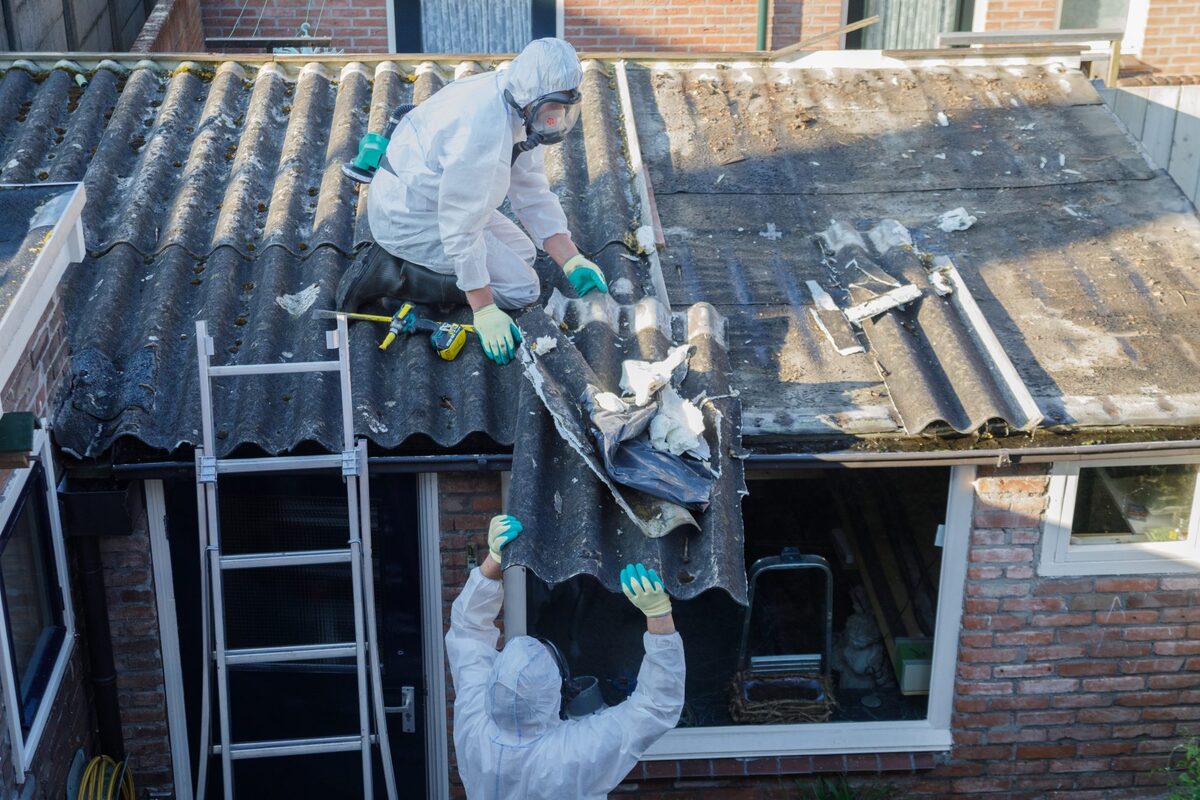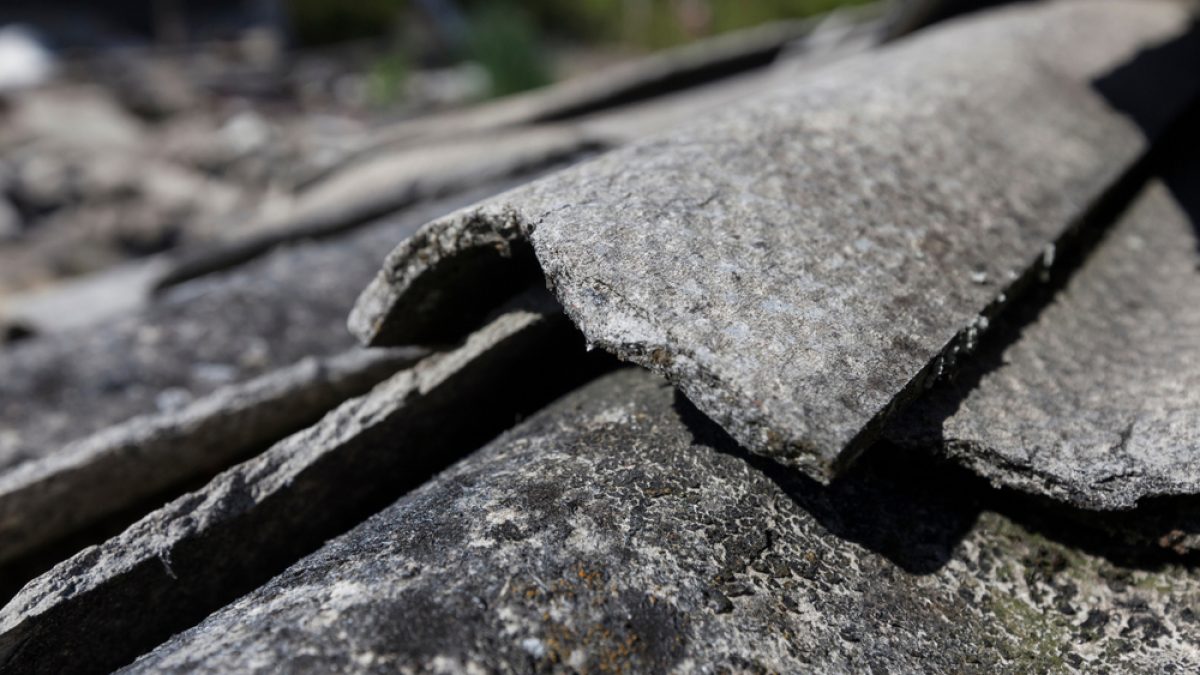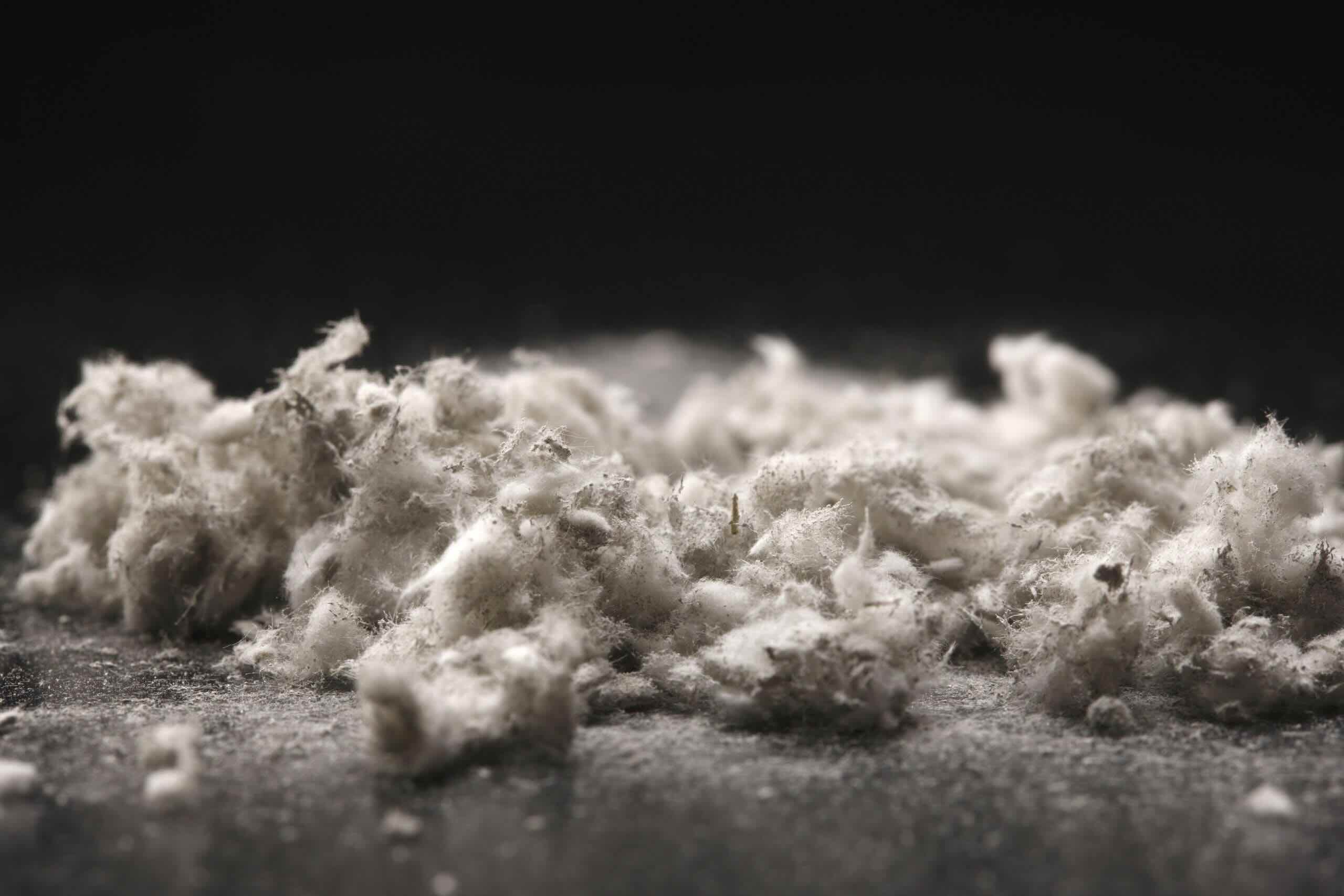Home>diy>Building & Construction>When Did Construction Stop Using Asbestos


Building & Construction
When Did Construction Stop Using Asbestos
Modified: January 8, 2024
Discover the timeline of when the use of asbestos in building construction ceased. Learn about the health risks associated with asbestos and how it affects your safety.
(Many of the links in this article redirect to a specific reviewed product. Your purchase of these products through affiliate links helps to generate commission for Storables.com, at no extra cost. Learn more)
Introduction
Construction has come a long way over the years, with advancements in materials, technology, and techniques shaping the industry. However, one material that was once widely used in construction but has since fallen out of favor is asbestos. Once hailed for its impressive fire resistance, durability, and insulating properties, asbestos has been linked to severe health issues.
In this article, we will explore the history of asbestos use in construction, the health effects it can have on individuals, the regulations surrounding its use, the identification and removal process, the decline in asbestos use, and the modern alternatives available in the construction industry.
By diving into the topic, we hope to provide a comprehensive understanding of the shift away from asbestos in construction and the importance of prioritizing safety in building projects.
Key Takeaways:
- The Decline of Asbestos: From Once-Prized Material to Strict Regulations
Asbestos, once celebrated for its fire resistance, has faced a dramatic decline in construction due to severe health risks, leading to strict regulations and the rise of safer alternatives. - Embracing Safer Alternatives: Modern Materials Redefining Construction
The construction industry has shifted towards asbestos-free materials like fiberglass, cellulose fiber, and mineral wool, prioritizing safety, health, and sustainability for future building practices.
Read more: When Did They Stop Using Asbestos Insulation
The History of Asbestos Use in Construction
Asbestos, a naturally occurring mineral, has been used in various construction applications for centuries. Its utilization can be traced back to ancient times, where it was prized for its fire resistant and insulating properties. The word “asbestos” itself derives from the Greek term “asbestinon,” meaning unquenchable or inextinguishable.
In the late 19th century, asbestos experienced a surge in popularity as industrialization took hold. Its affordability, abundance, and remarkable resistance to heat, chemicals, and electrical conductivity made it an attractive choice for construction materials. Asbestos was incorporated into a wide range of building components, including insulation, roofing materials, flooring, pipes, cement, and even decorative elements.
During World War II, asbestos use skyrocketed as the material was used extensively in the shipbuilding industry and military facilities. Its heat resistance made it ideal for insulating boilers and pipes on naval vessels.
However, it was during the latter half of the 20th century that the dark side of asbestos began to emerge. Researchers and health experts started linking exposure to asbestos fibers to various health issues, including lung cancer, mesothelioma, and asbestosis.
In the 1970s, the harmful effects of asbestos became widely recognized, leading to a gradual decline in its use in construction. Governments and regulatory bodies worldwide began implementing strict regulations and guidelines to protect workers and the public from asbestos-related hazards.
Despite its now well-known health risks, many older buildings still contain asbestos materials. This poses an ongoing challenge for construction professionals and building owners, as proper identification and safe removal are crucial to prevent further exposure and potential health complications.
Today, there is a strong emphasis on asbestos awareness, training, and proper handling in the construction industry. The goal is to ensure that in the pursuit of safe and sustainable building practices, the dangers of asbestos are recognized and managed effectively.
Health Effects and Regulations Surrounding Asbestos
The health effects associated with asbestos exposure are well-documented and can be severe. Inhalation of asbestos fibers is particularly dangerous as they can become lodged in the lungs, leading to long-term health complications.
One of the most devastating diseases linked to asbestos exposure is mesothelioma, a rare and aggressive form of cancer that affects the lining of the lungs, abdomen, or heart. Mesothelioma has a long latency period, with symptoms often appearing decades after exposure. Other cancers, such as lung cancer and ovarian cancer, have also been linked to asbestos exposure.
In addition to cancer, exposure to asbestos fibers can cause asbestosis, a chronic lung disease characterized by scarring of the lung tissue. This scarring can lead to breathing difficulties, coughing, chest pain, and a reduced quality of life.
Recognizing the dangers of asbestos, governments and regulatory bodies around the world have implemented stringent regulations and guidelines to protect workers and the public. These regulations are designed to limit and control exposure to asbestos, ensuring that it is handled safely and its risks are minimized.
For example, in the United States, the Occupational Safety and Health Administration (OSHA) has set specific standards for asbestos exposure in the workplace. These standards outline permissible exposure limits (PELs) and require employers to provide training, conduct regular monitoring, and implement proper engineering controls to prevent asbestos release.
Similarly, in the European Union, the use of asbestos has been heavily regulated. The EU has banned the use of all forms of asbestos since 2005, and Member States have implemented measures to ensure compliance with the ban and protect workers and the public from asbestos-related risks.
It is also worth noting that many countries have specific regulations regarding the removal and disposal of asbestos-containing materials during renovation or demolition projects. These regulations aim to prevent the release of asbestos fibers into the environment and protect workers and individuals living in the vicinity.
While regulations and awareness campaigns have made significant progress in reducing asbestos exposure, it remains a critical issue due to the prevalence of older buildings that still contain asbestos materials. The safe identification and removal of asbestos during construction and renovation projects are vital to protecting the health and well-being of construction workers and the general public.
The Identification and Removal of Asbestos
The identification and safe removal of asbestos are essential steps in ensuring the health and safety of workers and occupants in construction projects. Asbestos-containing materials (ACMs) are often hidden beneath layers of other materials, making it necessary to conduct thorough inspections and testing to identify their presence.
Before any renovation or demolition work takes place, it is important to hire a qualified asbestos inspector or asbestos abatement professional to assess the building and determine the presence of ACMs. These professionals are trained to identify potential asbestos sources, collect samples, and send them to a certified laboratory for analysis.
The identification process typically involves visual inspections, where the inspector examines areas known to contain asbestos or areas likely to have ACMs based on the construction history and building materials used. They may also use specialized equipment such as fiber-optic scopes to access hard-to-reach areas and take precise samples.
Once the presence of ACMs is confirmed, the next step is to develop an asbestos management plan that outlines the appropriate control measures. In some cases, encapsulation or encasement may be considered as an alternative to removal, if the ACMs are in good condition and not currently posing a risk.
However, if removal is deemed necessary, it is crucial to engage a licensed asbestos removal contractor. These professionals have the expertise and equipment to safely remove and dispose of asbestos materials as required by regulations. They follow strict protocols to minimize fiber release, including the use of negative-pressure enclosures, wet methods, and personal protective equipment.
During the removal process, air monitoring is conducted to ensure that asbestos fibers are not being released into the surrounding environment. Once the removal is complete, a thorough cleaning is performed, including the removal of dust and debris, to ensure the area is safe for reoccupation.
It is important to note that handling asbestos materials without proper training and protective measures can lead to the release of fibers and subsequent exposure. Therefore, it is strongly recommended to leave the identification and removal of asbestos to professionals with the necessary expertise and certifications.
By following strict protocols and guidelines, the identification and safe removal of asbestos can effectively eliminate the risk of exposure and protect the health of workers and occupants in construction projects.
Construction stopped using asbestos in the late 1970s and early 1980s due to the health risks associated with exposure. It is important to be aware of the potential presence of asbestos in older buildings and to take proper precautions when renovating or demolishing them.
The Decline in Asbestos Use
Over the past few decades, there has been a significant decline in the use of asbestos in the construction industry. This shift can be attributed to several factors, including the growing awareness of the health risks associated with asbestos exposure and the implementation of strict regulations governing its use.
As the scientific community began to uncover the harmful effects of asbestos, public concern grew, prompting governments and regulatory bodies worldwide to take action. In response to mounting evidence of the link between asbestos exposure and serious health conditions such as mesothelioma and lung cancer, many countries implemented regulations to limit or ban the use of asbestos in construction products.
In the United States, for example, the Environmental Protection Agency (EPA) issued a series of regulations throughout the 1970s and 1980s to control asbestos exposure. These regulations restricted the use of asbestos in certain products and set stringent guidelines for its handling and disposal. Additionally, the U.S. Consumer Product Safety Commission (CPSC) banned the use of asbestos in most commercial products in 1989.
Similarly, countries such as Australia, Canada, and several European nations have introduced comprehensive legislation and regulations to restrict or prohibit the use of asbestos in construction materials and products. These actions were taken to protect workers and the general public from the hazards associated with asbestos exposure.
The decline in asbestos use has also been influenced by the development of alternative materials that provide similar or superior properties without the associated health risks. For example, fiberglass, cellulose fiber, and mineral wool have become popular alternatives for insulation, offering comparable thermal and acoustic properties to asbestos without the inherent health dangers.
In addition, advancements in technology have led to the development of new building materials and construction techniques that do not require asbestos. For instance, modern fire-resistant materials, such as fire-retardant coatings, intumescent paints, and fire-resistant drywall, have been designed to provide effective fire protection without the use of asbestos.
Furthermore, increased awareness and education regarding asbestos risks have encouraged construction professionals and building owners to prioritize safety and opt for asbestos-free alternatives. This has played a crucial role in the decline of asbestos use and the shift towards safer building practices.
Overall, the decline in asbestos use can be attributed to a combination of regulatory measures, the development of alternative materials, and increased awareness of its health risks. Asbestos-free construction practices have become the norm, ensuring the safety and well-being of workers, occupants, and the general public.
Read more: When Did They Stop Using Mercury In Mirrors
Modern Alternatives to Asbestos in Construction
With the decline in asbestos use, the construction industry has embraced modern alternatives that offer comparable performance without the health risks associated with asbestos exposure. These alternatives provide a range of benefits, from enhanced safety to improved sustainability.
One popular alternative to asbestos in insulation materials is fiberglass. Unlike asbestos, fiberglass is non-toxic and non-carcinogenic. It offers excellent thermal and acoustic insulation properties and is widely used in residential and commercial buildings. Fiberglass insulation not only improves energy efficiency but also contributes to a healthier indoor environment.
Cellulose fiber is another eco-friendly alternative to asbestos. Made from recycled materials, such as newspapers and cardboard, cellulose fiber insulation is treated with fire-retardant chemicals to improve its fire resistance. It is a cost-effective and sustainable option that provides excellent insulation properties and reduces energy consumption.
Mineral wool, made from natural minerals like basalt or rock wool, is also gaining popularity as an alternative to asbestos insulation. It offers good thermal and acoustic insulation, is fire-resistant, and does not release harmful particles or fibers into the air. Mineral wool is commonly used in wall and roof insulation, providing energy-saving benefits and increased fire safety.
Fire-resistant coatings and paints have also emerged as effective alternatives to asbestos-containing materials. These coatings are applied to structural components to enhance their fire resistance. Intumescent paints, for example, react when exposed to high temperatures, expanding and creating a protective barrier that slows down the spread of fire. These coatings are widely used in commercial buildings, public facilities, and industrial settings to improve fire safety.
Asbestos-free cement products have become commonplace in the construction industry. Fiber cement boards, for instance, are a durable and fire-resistant alternative used for cladding, siding, and roofing. These boards consist of a mixture of cement, cellulose fibers, and other additives, providing excellent strength, weather resistance, and thermal insulation properties.
Furthermore, new synthetic roofing materials, such as synthetic slates and shakes, have emerged as sustainable and asbestos-free alternatives to traditional roofing materials like asbestos cement roofing sheets. These synthetic materials replicate the appearance and durability of natural slate or wood shakes without any asbestos content.
The development of safer and more sustainable alternatives to asbestos in construction materials continues to evolve. With advancements in research and technology, the construction industry has a wide range of options available, allowing projects to be built with materials that prioritize safety, health, and environmental sustainability.
Conclusion
The construction industry has witnessed a significant shift away from asbestos use due to the well-documented health risks associated with exposure to asbestos fibers. The history of asbestos in construction highlights its once-prized properties and widespread use, particularly for its fire resistance and insulation capabilities.
However, as scientific research uncovered the severe health effects of asbestos, governments and regulatory bodies worldwide implemented strict regulations to protect workers and the public from exposure. The identification and safe removal of asbestos have become critical components of construction projects, ensuring the health and safety of all involved.
The decline in asbestos use has been accompanied by the rise of modern alternatives in the construction industry. Materials such as fiberglass, cellulose fiber, and mineral wool offer comparable properties to asbestos without the associated health risks. These alternatives provide excellent insulation, fire resistance, and sustainability, contributing to improved building practices.
Additionally, advancements in technology have led to the development of new materials and construction techniques that do not require asbestos. Fire-resistant coatings, intumescent paints, and asbestos-free cement products are just a few examples of safer options available to the industry.
As we move forward, the construction industry must continue to prioritize safety, health, and sustainability. By embracing asbestos-free alternatives and adhering to strict regulations, we can create buildings that promote the well-being of occupants and construction professionals alike.
It is imperative to maintain a strong focus on asbestos awareness, training, and proper handling to prevent exposure and mitigate risks. This includes thorough building inspections, the engagement of qualified professionals for identification and removal, and ongoing education within the construction industry.
By consistently prioritizing safety and embracing modern alternatives, we can create a future where asbestos is no longer a concern in construction. Through continued research, innovation, and responsible practices, we can build a safer and healthier environment for generations to come.
Frequently Asked Questions about When Did Construction Stop Using Asbestos
Was this page helpful?
At Storables.com, we guarantee accurate and reliable information. Our content, validated by Expert Board Contributors, is crafted following stringent Editorial Policies. We're committed to providing you with well-researched, expert-backed insights for all your informational needs.















0 thoughts on “When Did Construction Stop Using Asbestos”